- Clandestine Kenyan team has been paid and assisted by the CIA to take down terror suspects since 2004. “We’re really hands-on. We don’t just hand them the money once a month”, one US official said.
- “Unconstitutional killings” include a family man wrongly slain due to mistaken identity, and allegations a terror suspect was summarily executed.
- Britain’s MI6 plays a key role in identifying suspects for a ‘kill or capture’ list and finding and fixing their location.
- Paramilitaries use covert tactics such as fake number plates and disguise themselves as aid workers on operations in refugee camps, which “shield perpetrators of abuses from any shred of accountability”.
- Killings are “radicalising” Kenya, a former US ambassador and Kenyan vice president both told Declassified.
Read Part 2 of this investigation here
A day before being killed in August 2019, 45-year-old motorcycle taxi driver, Mohamed ‘Modi’ Mwatsumiro was heard arguing with his wife at their tin roof dwelling in the small town of Ngombeni, on the south coast of Kenya. Modi had ordered her to leave with their young child and stay with her family.
“Even though she really tried to resist, he was insistent that she must leave with the child. He became aggressive and she had to give in. It was as if he was expecting something to happen that night,” a neighbour told Kenya’s leading newspaper hours after Modi was killed.
It is not known whether Modi had asked his wife to leave because he feared he was a marked man, but Kenyan police suspected he was linked to a suicide bomber involved in the DusitD2 hotel complex terrorist attack in Nairobi in January 2019, which killed 21 people including a US citizen.
Somalia-based group al-Shabaab, which is designated as a terrorist organisation by the US and British governments, among others, claimed it had ordered the operation in retaliation for the US decision to relocate its embassy in Israel to Jerusalem.
Eight months later, on 30 August, the same Kenyan paramilitary team that swept in to repel the DusitD2 attackers reappeared, this time at Modi’s mud-stone home which sits among thickets of coconut palms, cashew and neem trees.
What followed took a familiar pattern for night time counter-terror raids in Kenya, many of which remain shrouded in mystery and rumour.
At just after 4am, Kenyan paramilitary commandos arrived in unmarked vehicles, armed with US-made M4 assault rifles and Glock pistols. Ordering concerned neighbours to stay indoors, the plainclothes officers stormed Modi’s home.
After the commandos breached his property, Modi hurled a grenade that failed to detonate, police later claimed. Seldom does a suspect emerge alive in such raids. Modi was no exception.
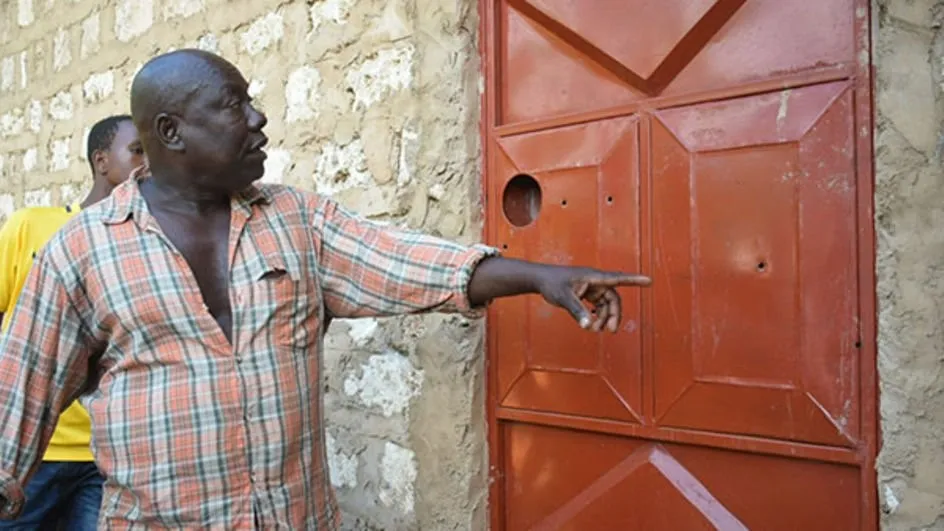
Mohammed Hamisi, a neighbour and relative of Mohamed ‘Modi’ Mwatsumiro, shows reporters bullet holes in the door to Modi’s home after the RRT raid in which he was killed. A firearms expert consulted by Declassified determined they were entry holes. (Photo: Nation Media Group / Wachira Mwangi)
A covert war
The commandos who raided Modi’s home belong to the Rapid Response Team (RRT), a clandestine ‘special team’ of the Kenyan paramilitary General Service Unit’s Recce Company. The RRT was set up, equipped, trained and is guided on tactical counter-terror operations by America’s Central Intelligence Agency (CIA), a Declassified investigation can reveal.
The secretive Kenyan team is informally known as the Rendition Operations Team and is composed of around 60 police commandos.
The CIA’s covert programme, which began in 2004, is managed by a paramilitary liaison officer at the US embassy in Kenya’s capital Nairobi, but has until now successfully avoided public scrutiny.
Based on interviews with over two dozen CIA, US State Department and Kenyan intelligence, paramilitary and police officers, this investigation has found that in its 16 years of operation, the CIA-backed team has been responsible for the capture of high-value terror suspects, as well as rendition operations, killings and alleged summary executions.
The creation of the RRT was “an indigenous solution to an indigenous problem”, a former senior CIA counter-terrorism official told this investigation. “Our leadership at CTC [CIA Counterterrorism Center] and others felt that setting up these units was important: it was something that gives value to the partnership and it puts a unit under our control for when we have targets that we feel need to go down.”
Often, the paramilitary team’s raids are driven by intelligence provided by the CIA itself, as well as Kenya’s National Intelligence Service (NIS). However, multiple current and former US and Kenyan diplomatic, intelligence and police sources said that Britain’s Secret Intelligence Service (SIS, better known as MI6) plays a key role in identifying, tracking and fixing the location of targets, as well in decisions determining their fate: kill or capture.
The American and British governments provide covert support to Kenya in order to help it defeat al-Shabaab, an al-Qaeda-linked group that has carried out dozens of deadly attacks in Kenya. Its most high profile atrocities have been on Nairobi’s Westgate shopping mall in 2013, where it killed 67 people and on Garissa University in 2015 which killed 148.
Al-Shabaab and its sympathisers are also behind a number of high-profile abductions and attempts to kill foreign dignitaries, including a plot to bomb then-Secretary of State Hillary Clinton during a visit to Kenya in 2009.
Former deputy chief (operations) of the CIA’s Counterterrorism Center, Henry Crumpton explained the nature of the war on terror in Kenya. “It’s a different type of conflict, a different type of war. And it is intelligence-driven.”
Crumpton, who led the CIA’s war in Afghanistan in 2001, continued, “I think that’s why the CIA really has had the lead in many areas, long before any others, because the CIA was there and the CIA was providing value to those partners and the operations, whether they are diplomatic or law enforcement or military, even economic, all those instruments of statecraft, they’re all informed and driven by the intelligence. That’s the foundation for this conflict.”
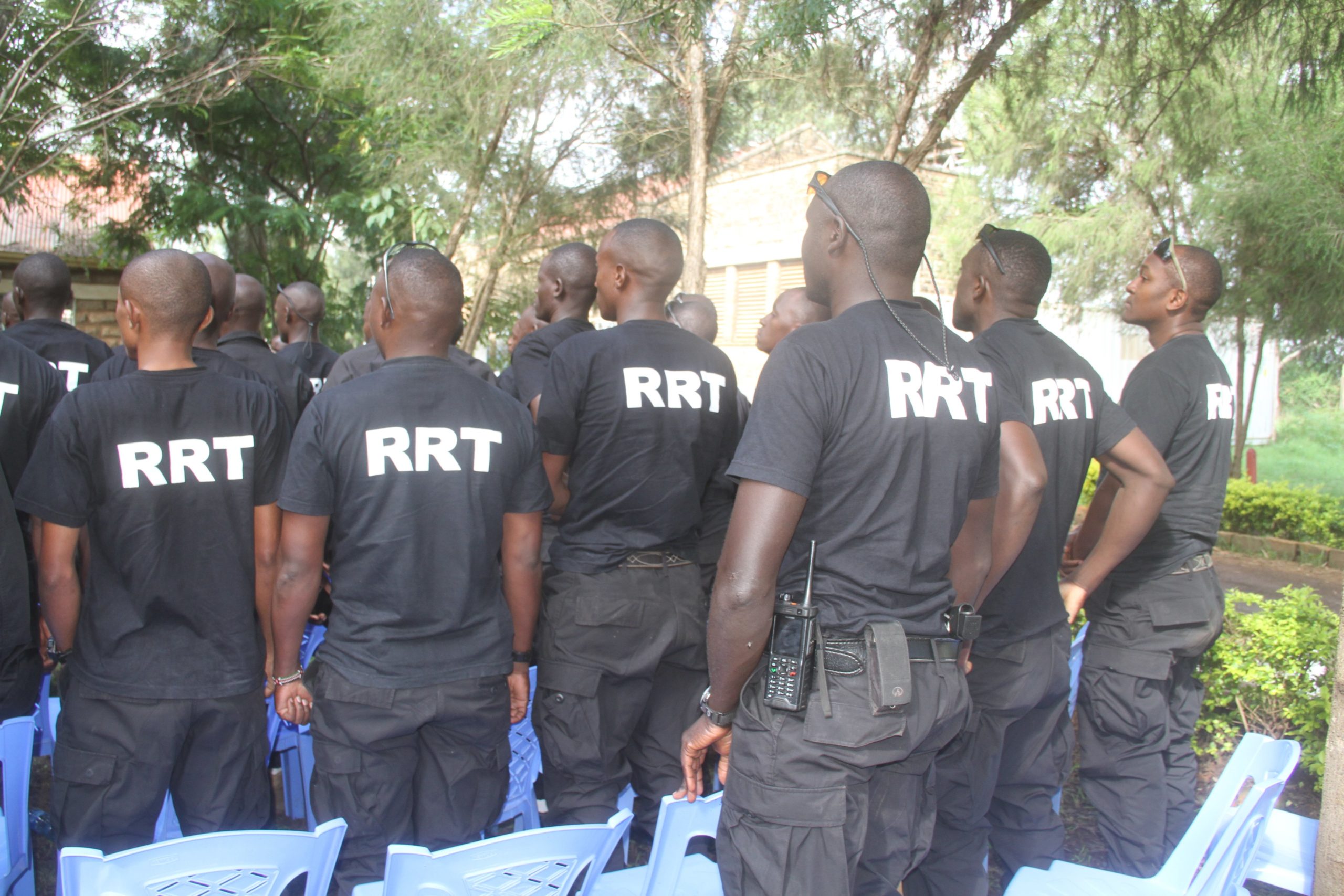
CIA-backed RRT paramilitaries participate in a Christmas ceremony in 2019 during a visit from the Kenyan police Inspector General and other senior police officers. (Photo: Kenyan National Police Service)
A former senior US official based in Africa with knowledge of US-Kenyan counter-terrorism operations said that the same agencies, CIA and MI6, also determined the fate of the target. “It’s the intelligence services identifying the threat, figuring a way out to mitigate the threat, figuring out that this is going to be a law enforcement end state [capture] or not [kill] and then dealing with it”.
The decision around the fate of a given target would be decided “between us [the CIA] and your guys on the intel side [MI6]”, the former US official continued. “We had these conversations about ‘what are we going to do with this [or that] guy?’. You know given these set of facts, what can we do with these guys?”
Modi’s post-mortem report references seven gunshot entry wounds from RRT fire: two to his left elbow, another in the right forearm, two in his chest and a further two gunshots wounds in his left upper jaw, with exit wounds in his lower jaw.
“We knew him,” Modi’s neighbour Ali Matete told reporters the day after the killing. “He conducted his prayers here, in this area, and in our mosque. But we do not know what he did. When we saw the incident today, we asked ourselves [what is going on] because we’re in darkness.”
Just over a month after Modi was killed, RRT paramilitaries were in action again, in a dawn raid on a house in neighbouring Mombasa county. Police alleged the men inside were linked to Modi and had planned to launch terror attacks. After another alleged “shootout” the three suspects emerged in body bags.
While the precise number of RRT kill or capture raids against terror suspects is unknown due to the clandestine nature of the force’s operations, Declassified has investigated over a dozen cases.
In many instances, suspects raided by the RRT have ended up dead, with a police spokesperson subsequently claiming the target was armed and dangerous. But this investigation has also found cases of mistaken killings and alleged summary executions.
Khelef Khalifa, chair of Kenyan human rights organisation Muhuri, said: “When these extrajudicial killings happen, Muslims feel they are under siege because they cannot comprehend why the government cannot arrest these people and take them to court, instead of killing them.”
Intent on remaining in the shadows, once suspects are “neutralised” – killed or captured – the plainclothes commandos of the RRT hand control of the operation to local police; typically Kenya’s Anti-terrorism Police Unit (ATPU). In doing so, the RRT successfully avoids scrutiny – let alone accountability – for operations now spanning over a decade.
So, too, does its American backers.
“The present government targets [people] in extrajudicial killings. And takes out people in Mombasa, like Rogo,” former Kenyan vice president, Kalonzo Musyoka said, referring to the late cleric Aboud Rogo who was killed by an unidentified hit squad in 2012. Police reports after Modi was killed claimed he had been radicalised by Rogo.
Describing the killings as “unconstitutional”, the former Vice President added: “This has spread bitterness…but because we are doing the bidding of the West in the war on terror, they are allowed to.”
RRT commandos and their American backers stressed that the Kenyan force is not strictly a ‘kill team’ in the way ‘Tier 1’ special force units, such as Delta Force and Seal Team 6, can and do receive express orders to take out targets. “It’s not the same as having Seal Team 6 go after a target…[but] it’s not like it’s going to be investigated if it ends up in a military end-state [killed]”, the former senior US official explained.
However, in a case investigated by Declassified, an officer confided that the unit was explicitly tasked to “eliminate” a high-value terror suspect, only to wrongly kill a family man. In two other cases, witnesses say the suspects were killed by RRT commandos without any armed resistance.
The former senior US official added, “There’s never a real investigation by the Kenyan government. They don’t want to get to the bottom of it. It’s just not going to happen.”
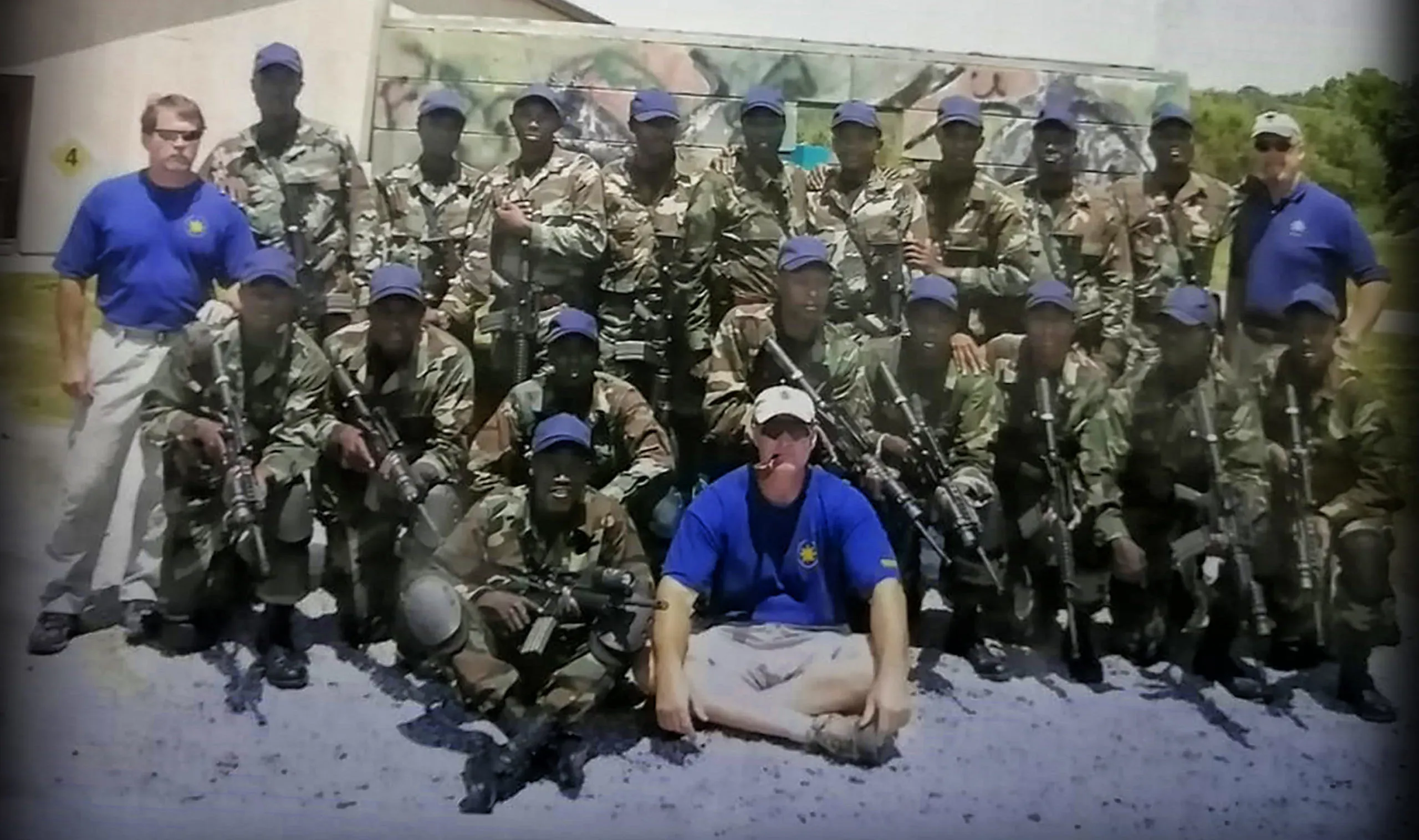
“Team 18”: the first crop of recruits undergoing their CIA-sponsored training in Rendition Operations at a US training facility in 2004. Their American paramilitary trainers called themselves Mr. Bad, Robin and Nick.
Mistaken killing
Defenders of the RRT say it has been instrumental in neutralising the threat from al-Shabaab. While the Kenyan and international press have made no mention of the RRT’s central role in counter-terrorism operations, multiple US and RRT sources confirmed that the CIA-supported team played a lead role in successfully neutralising the Garissa and DusitD2 attackers.
In another pre-dawn raid in Kenya’s coastal town of Mombasa on 28 October 2012, Omar Faraj and his wife woke to banging on their front door. Fearing that a family member had come to deliver bad news about his sick mother, Faraj rushed to answer. But before he unfastened the lock, he realised from the sound of the visitors’ voices that they were strangers.
“Open up,” the men outside demanded.
Thinking they were robbers, Faraj called his neighbour, who told him that the men were, in fact, heavily-armed plainclothes police. Unsure of what to do, Faraj, who worked as a cashier at a local butcher and as a part-time Islamic preacher, turned to his wife. She urged him not to open the door.
“He was a religious person and the Kenyan government goes after religious people,” Faraj’s wife Rahma Ali said. “Several people had died in such scenarios. I thought he’d be killed.”
Mombasa had already witnessed a string of unexplained killings of radical Muslim figures. Two months prior to Faraj’s killing, unknown assailants gunned down the radical cleric, Aboud Rogo, sparking three days of riots.
The raid that unfolded at Faraj’s home was reported as being by Kenya’s ATPU, but this investigation has learned that it was in fact led by the CIA-supported RRT.
According to a Kenyan officer briefed on the operation, on the night of the raid the team was, in fact, hunting for Fuad Abubakar Manswab, the alleged mastermind of a foiled 2011 terror attack in Mombasa, whom authorities believed to be hiding in the neighbourhood. Manswab was thought to be “armed and dangerous and someone who can engage and kill,” the officer said, noting that “he escaped a prior operation with a wound”. So the RRT were instructed to “eliminate” him.
But the Kenyan officer, corroborating further accounts obtained by Declassified, recounted how an intelligence informant mistakenly led the paramilitary team to Faraj’s home, believing that Manswab was there. “The operation’s target was somewhere else, but there was some mix-up and they headed to the wrong house,” the officer said.
Unaware they were targeting the wrong home, the commandos broke down the door and fired tear gas inside. Faraj took his wife’s hand as they climbed out of their bedroom window, hoping to scale their neighbour’s wall and reach the safety of his brother’s nearby home. They never made it.
Faraj’s wife, Rahma Ali, remembers watching the commandos open fire on her husband, who was balanced on a flowerpot trying to climb the wall. They hit him in the temple, and he fell back on top of her, blood streaming from his head.
Fearing that the commandos would kill her too, Ali, who was covered in Faraj’s blood, says she played dead next to him. In plainclothes but, according to Ali, sporting body armour and M4 carbines supplied by the CIA, the operatives approached and stood over the couple, surveying their kill.
As she lay terrified on the floor, Ali heard one of the commandos say they should make sure she was dead. But the man’s superior overruled him, declaring, “We’ve finished the job.”
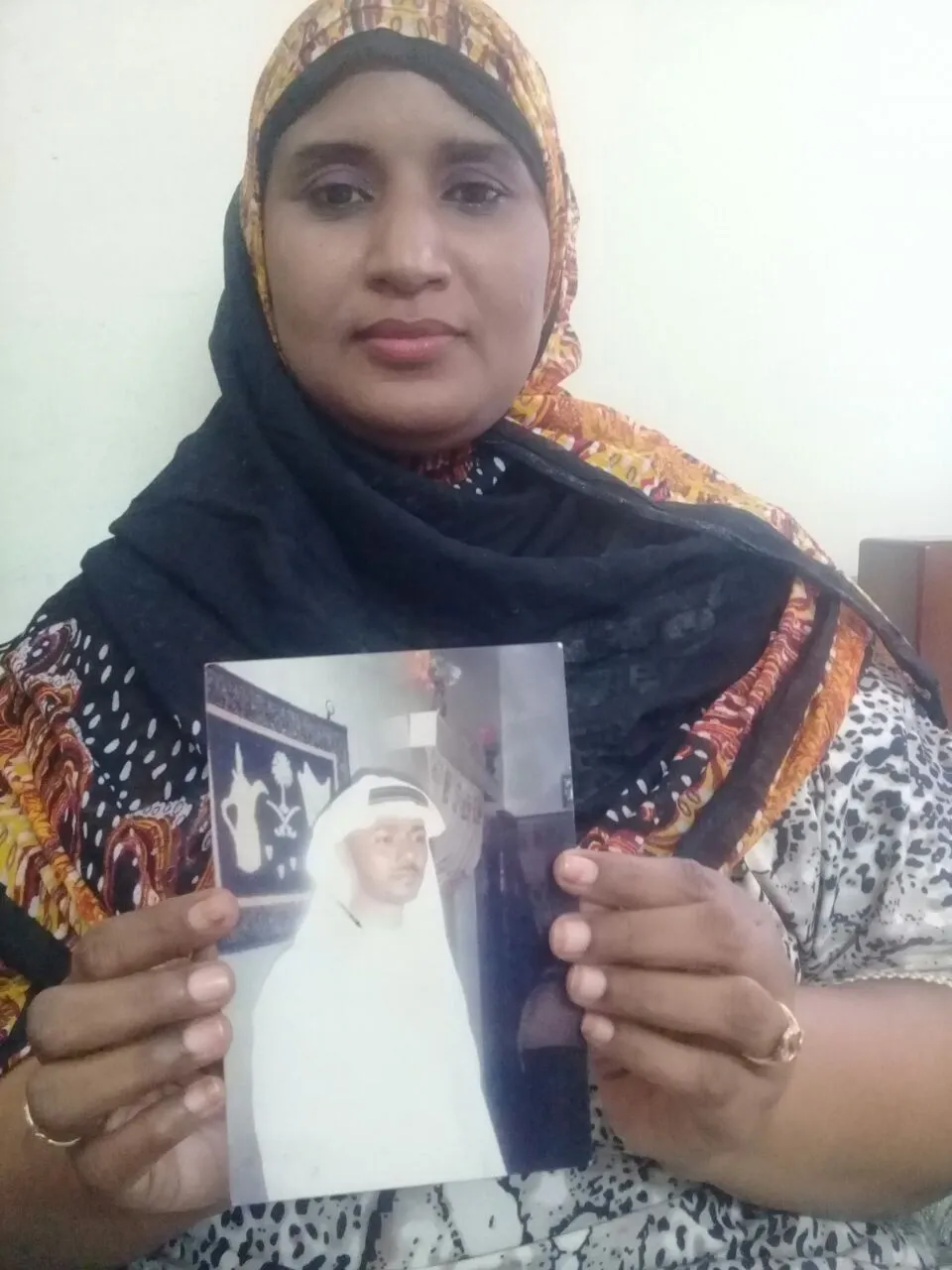
Rahma Ali holds a photo of her slain husband, Omar Faraj, taken on their wedding night. (Photo: Namir Shabibi)
Kill or capture
Faraj’s killing epitomised a shift in RRT priorities. Initially designed and trained to capture terror suspects for detention, interrogation and possible rendition to other countries, its objectives appear to have shifted mid-way through President Obama’s first term in office, at a time when suspects in Kenya became harder to capture.
“In the days before, these guys [terror suspects] were never violent and never armed”, explained a former ATPU officer who shadowed RRT commandos on multiple tactical operations. “So it was not hard to arrest them. It’s only after 2011, when Kenyan forces went into Somalia and Kenya became a legitimate target, so they are always armed. They brought a lot of arms into Kenya…[and] they can really give a good fight. So that is where the use of the Recce [RRT] came in.”
By 2011, America’s preferences for dealing with terror suspects had already been embraced in the war in Afghanistan in the form of the Joint Prioritised Effects List (JPEL), a US-UK secret list of priority targets designated for kill or capture, the former senior US official based in Africa said.
Describing JPEL targets as a list of problems to be “eliminated”, the former official continued, “That’s the mentality that carried over. I’m sorry to say, and it sounds obnoxious to say it, but it’s something we did there [in Kenya].”
Current and former members of the RRT stressed their objectives prioritise capture over killing. However, they all confirmed that any perceived threat or resistance from targets is to be met with lethal force.
“I don’t have to shoot if I don’t see your hand”, a RRT officer said, describing the team’s rules of engagement. “Because the hand is the most dangerous part…But if you have something in your hands, I don’t have to spare you because you mean danger to me.”
The senior US official familiar with RRT operations explained that the team’s tactical operations against terror suspects – surprise raids under the cover of darkness – did not always afford the “the good guys” a chance to be arrested, as in Faraj’s case.
“When they [RRT officers] say that the goal is to arrest, it’s to arrest somebody like a Louisiana parish sheriff would arrest somebody”, the former US official said, referring to Louisiana police’s reputation of being a law unto itself. “They [RRT] do have the ability to make an arrest but…the good guys don’t always stop exactly when most people think they should stop.”
Some RRT members provided a starker account.
“When we were trained on threats, we were taught human rights come later. If you have this bad guy and you cannot get him for interrogation then you’d better execute [him]”, said one of a dozen current and former Kenyan paramilitary officers who spoke on condition of anonymity.
Three ATPU officers – one former and two still serving – who had flanked the RRT on tactical operations echoed the description of RRT mission objectives. “You know the Recce Company [RRT] have been trained to take out suspects,” said a serving officer. “Their mission is just to take out suspects. You know they don’t investigate. They just identify the target, neutralise the target and then they go back.”
Sometimes, though, targets are taken alive. In 2010, Kenyan police kidnapped and rendered the suspected militants behind the al-Shabaab-inspired bombings of a rugby club and restaurant in Kampala, Uganda, to face interrogation by American, British and Ugandan agents. Though Kenya’s ATPU was widely blamed for the renditions, multiple police and paramilitary sources confirmed that RRT operatives undertook some of them, in addition to renditions from Somalia in the years before.
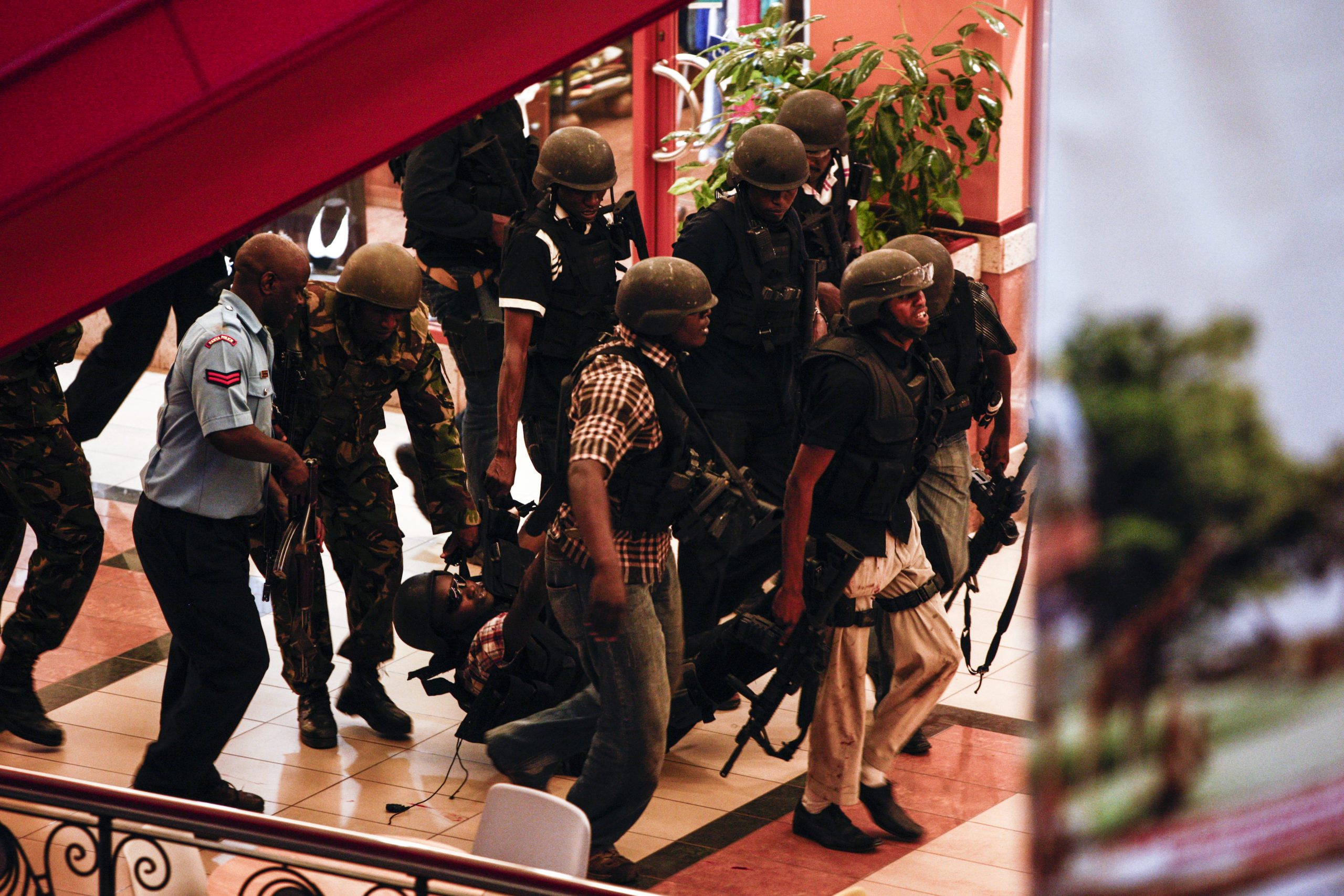
Recce Company officers help an injured man inside the Westgate shopping mall in Nairobi, Kenya, 21 September 2013, during an attack by Somali terrorist group Al-Shabaab. (Photo: EPA/Kabir Dhanji)
One RRT officer recalled a US-sponsored rendition operation to Uganda. RRT operatives captured the suspect in Nairobi, drove him overland to the western border, and then handed him over to their Ugandan counterparts. The officer recalled strong interest in the case from the RRT’s CIA handlers, explaining that “they even gave us fuel for the vehicles and our upkeep all the journey”.
But more often, RRT members set out on operations knowing the target will never be interrogated or tried. Such outcomes suited decision-makers back in Washington, according to the former senior US official based in Africa. “There’s one stat that counts more than convictions. And that’s neutralisation of a criminal organisation.”
As with the renditions, journalists and human rights activists have long blamed the ATPU for extrajudicial killings of terror suspects. But former and current US officials with knowledge of Kenyan counter-terrorism, as well as RRT officers, confirmed that the ATPU has neither the capacity, weaponry or close-quarter battle skills to undertake high-risk raids.
Additionally, the CIA has no direct relationship to the police unit; as such it cannot be tasked with neutralising high-value terror suspects. Instead, the ATPU plays an investigative role, either by claiming the arrest or handling the crime scene.
“Those guys [RRT] are highly trained and they are serious about things”, a former ATPU officer said. “Any suspect, even the amateurs, who we believe to be armed – they [RRT] are the ones to get in and neutralise [the target] then they leave us to do the investigations and collection of evidence. ATPU takes a back seat in high risk or high-value operations.”
A study by the Independent Medico-Legal Unit, a non-profit organisation that monitors misconduct by law enforcement, recorded 1,873 gun deaths in six urban areas in Kenya between 2009 and 2014. It found Kenyan police were involved in nearly two-thirds of the cases, many of them execution-style killings.
More recent IMLU figures show a decline in extrajudicial executions in the last five years but they still amount to over 100 per year.
The RRT does not account for the bulk of these alleged extrajudicial killings in Kenya, both US officials and RRT officers stressed, since its role is dedicated to targeting high-value or high-risk terror targets. But when suspects disappear or turn up dead, the Kenyan government rarely undertakes a formal investigation.
According to Maria Burnett, former East Africa director for Human Rights Watch, out of hundreds of extrajudicial killings that have taken place during counter-terrorism operations in recent years, “only a small handful” had been seriously scrutinised.
In Faraj’s case, the Kenyan government never acknowledged its role in his death, instead claiming that security forces killed “terrorists” after being fired upon. It was similarly unabashed about the fate of Titus Nabiswa, the police informant who led the commandos to Faraj’s house that night and whose body was later found dumped, killed by a gunshot wound to the head.
The US hand
Housed at a secretive base in the town of Ruiru, roughly 30 miles east of Nairobi, the ranks of the Rapid Response Team (RRT) have thinned in recent years as some members have decamped for Kenya’s burgeoning private security sector, which offers better pay and working conditions.
To counter these temptations, the CIA’s paramilitary liaison to the RRT provides regular financial support, including allowances for operations and bonuses for successful missions. This is designed to supplement the low wages of Kenyan police officers who make as little as $115 per month. Injured operatives are given cash payouts and treatment at Nairobi’s private Aga Khan hospital. RRT officers call these “motivation packages”.
While the amounts have varied over the years, RRT officers confirmed receiving the equivalent of a 30% “boost” to their salaries per month, paid for by the US embassy. “For a constable KSh 5,000 (US$46) is a huge amount of money”, one RRT officer said. “You could educate your child”, he added.
The RRT also receives weapons and equipment from the CIA. Initially supplied with M16 assault rifles, then M4 carbines, they have also received Glock pistols, M79 grenade launchers, body armour, helmets and M67 and Stinger CS grenades.
The RRT’s operations appear to need sign-off from the US. Multiple RRT sources independently confirmed that the team is not to be deployed by its Kenyan command for tactical anti-terror operations without the knowledge and consent of its US embassy handlers. The exceptions are for rapid response to high-profile terror attacks, such as the Westgate mall and DusitD2 attacks, and for the diplomatic protection of foreign dignitaries.
“You know, those teams are owned by their [US] trainers…They are the equippers, so they are like their bosses now. So if there is anything, they [the US] communicate direct: ‘We need this to be done’”, a Kenyan paramilitary officer with knowledge of the US embassy liaison relationship said.
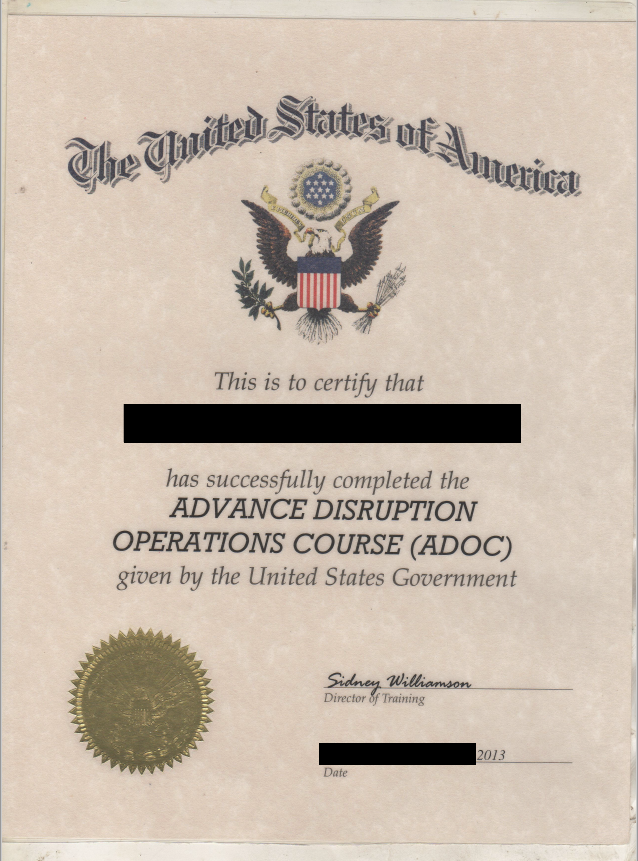
A training certificate issued to an RRT commando who underwent the CIA-organised Advanced Disruption Operations Course in 2013.
Since 2004, the CIA has paid for RRT commandos to fly to the US for SWAT-style training in rendition and disruption operations, including reconnaissance and surveillance, storming a building, close-quarter battle, and weapons handling at locations that include Annapolis Naval Academy in Maryland.
But the US role goes further. The CIA paramilitary liaison, based at the US embassy in Nairobi, is directly involved in planning some of the RRT’s operations.
Occasionally, CIA operatives themselves have participated in operations, US officials and Kenyan RRT officers confirmed. “If they really, really want the results, they will even assist directly,” one mid-ranking Kenyan paramilitary officer said.
CIA paramilitary officers and contractors have also assisted the RRT by conducting surveillance and tracking of a target, either remotely or from a nearby safehouse or vehicle. However, even as they observed operations unfolding, they maintained a careful distance, RRT officers said.
Some areas, such as the slums of Nairobi’s Eastleigh district, would often prove too dangerous for US officers. “You know the Eastleigh area is dominated by Muslim guys. So they would not dare to go there and do that surveillance without the support of armed people”, one officer said.
However, for operations in other parts of Nairobi and in Mombasa, CIA officers on the ground have assisted in planning raids, having conducted surveillance on a target’s dwelling, and provided their position, often by use of mobile phone location trackers. A senior RRT officer said such intelligence support was essential to avoiding detection.
“If we don’t have something to track the phone, we go banging on other people’s houses and it’d cause an outcry, like we are robbers, the officer said. “With that [CIA] support we were able to zero in and locate the exact areas where the targets were and avoid that issue of complaint. Because once we hit the right target, we get whatever we wanted.”
Britain’s role
Working closely with its counterparts at the Counterterrorism Unit of Kenya’s National Intelligence Service (NIS), the CIA identifies suspects and prepares target packages – intelligence and analysis on a given suspect – that include actionable intelligence. Together they decide a given target’s fate in a so-called “disposition matrix” that includes options ranging from arrest to using lethal force, according to the former senior US official based in Africa.
A former RRT officer with knowledge of this coordination with the US embassy explained, “Sometimes we would have them [target lists] in our office: you have dealt with this one, you are remaining with these ones. All that information we are being given by the US government, not the NIS.”
A mid-ranking RRT officer familiar with the target list said it included Jeremiah Onyango Okumu (‘Dudah Black’) and Samir Khan. Both faced terror charges and were disappeared, with Khan’s body subsequently found mutilated. While the officer admitted that his team had arrested Khan on the first occasion, he denied RRT’s involvement in his subsequent disappearance.
In 2015, then CIA director John Brennan told an audience, “We exchange information with our counterparts around the world to identify and track down men and women believed to be violent extremists… Our cooperation with foreign liaison quietly achieves significant results. Working together, we have disrupted terrorist attacks and rolled back groups that plot them.”
In formulating the target packages, CIA officers in Nairobi also work closely with their counterparts at MI6, Britain’s foreign intelligence service, which relies on its long-standing human intelligence network to provide actionable intelligence by finding and tracking targets and infiltrating militant circles.
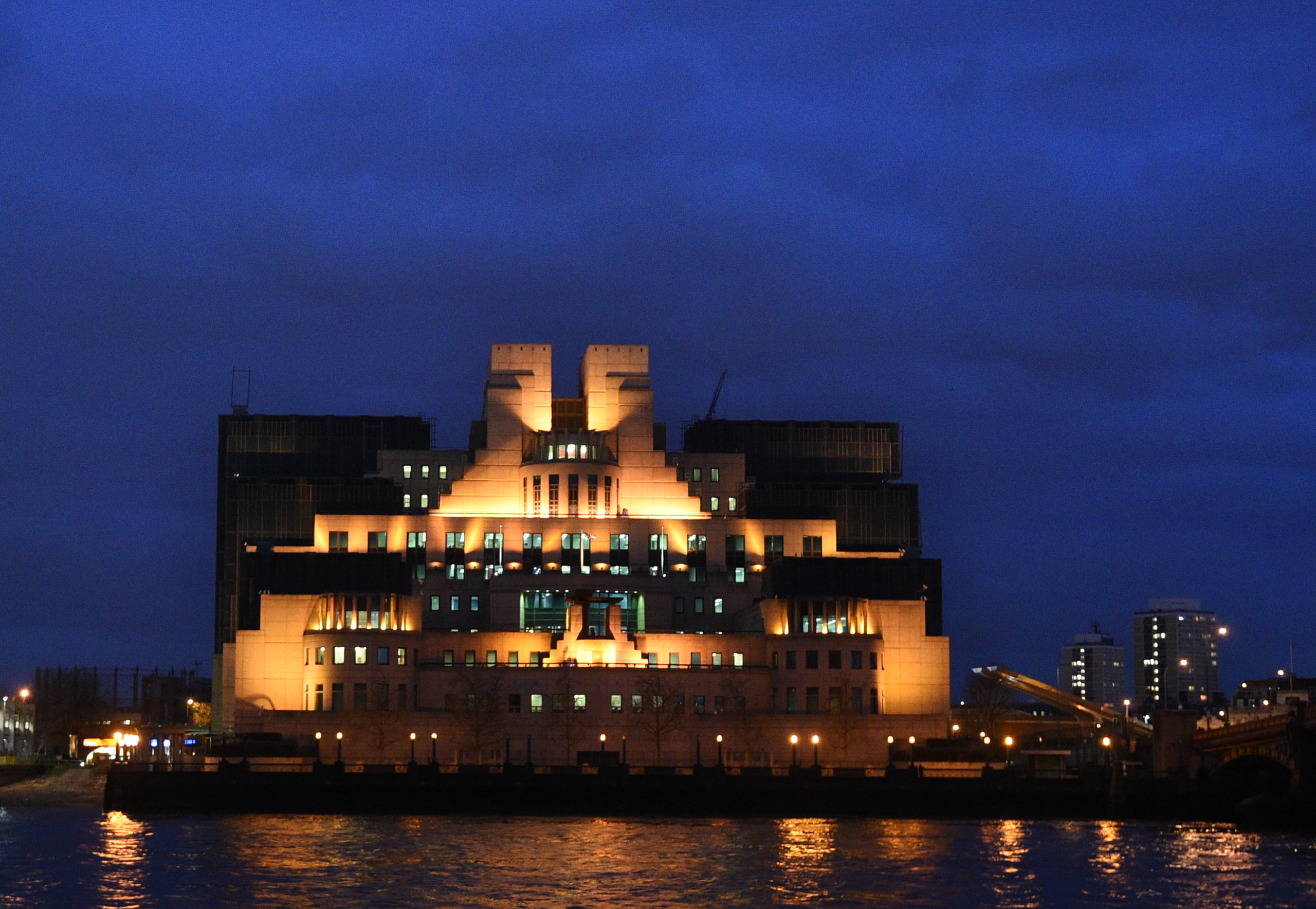
The building housing the Britain’s Secret Intelligence Service, or MI6, is seen by the river Thames in London. (Photo: EPA / Facundo Arrizabalaga)
“The Brits were worried”, a former senior CIA counter-terrorism official said, noting the influx of British ‘jihadi tourism’ to Somalia, via Kenya, after 2010. “Because they had a lot of British cases and I mean British citizens. In some respect I think the British kids were showing up there before some of our guys, before the American citizens started going to be suicide bombers.”
He continued: “If you’re working with the Kenyans you’re going to want to know about these British guys that are going to be coming to Kenya to get to Somalia”.
As well as long-standing colonial ties to Kenyan tribes and communities, MI6 boasts a specialism in human intelligence, tracking and infiltration operations. Such capabilities are often relied on by the CIA in Kenya and other covert counter-terrorism operations, such as in Yemen, two former senior US officials confirmed.
“We reinforced each other”, a former senior US State Department official said of US-UK counter-terrorism in Kenya. “But the US was very much in the lead and there was good cooperation between us and the UK on the ground. And [Kenya’s] NIS always understood that.”
Echoing MI6’s importance, the former senior CIA official recalled: “I’ve seen them infiltrate. When it comes to human intelligence in CT [counter-terrorism], I think they’re one of the best services in the world in terms of running penetrations of terrorist organisations.”
Leaked US diplomatic cables show that for over a decade Kenya’s intelligence service, NIS, has had “primary responsibility for CT [counterterrorism]” in the country. As lead agency, NIS is the principal beneficiary and conduit of the bulk of CIA and MI6’s efforts in Kenya, former senior CIA and State Department officials confirmed.
“They [NIS] were the meat and potatoes of everything we did”, the former senior State Department official said. “The police didn’t have much of an intel capability. Actionable information always flowed through the intelligence service.”
Unlike the CIA, actionable intelligence from MI6 does not reach the RRT paramilitaries directly, but through its CIA and NIS counterparts.
“When the British supply intel, it takes time to get down to us. The Americans come to us directly. They tell us this is what is happening and they have already informed the other authorities so we are given information to go and conduct the operation”, one paramilitary officer explained.
‘ARCTIC’
As well as working with the CIA on target development, MI6 also collaborates with a dedicated team of Kenyan intelligence officers, as part of a liaison cell within NIS’ Counter-terrorism Unit, codenamed ARCTIC, multiple Kenyan and US intelligence officials confirmed. At times, the NIS ARCTIC cell works directly with RRT operatives in finding targets and fixing their location before sending in the RRT.
One of MI6’s targets included British national Jermaine Grant. Grant had sneaked back into Kenya after allegedly receiving paramilitary training in Somalia and was an associate of British terror suspect Samantha Lewthwaite, dubbed the ‘White Widow’.
As a British national, killing Grant would have focused scrutiny on the relationship between Britain and Kenya’s security forces. So in 2011, RRT officers, guided by NIS ARCTIC agents working in collaboration with MI6, led an operation intent on capturing him, two Kenyan officers familiar with the operation confirmed.
One Kenyan officer explained, “The Recce [RRT] and NIS were ahead of us. They arrested [him], they took away his flash disk and his purse [wallet]. After some time, they brought him to the police station but they didn’t book him in. They came and he was in the boot of the car outside the police station.”
But not all MI6 targets are as fortunate as Grant, who is now serving a 13-year jail sentence in Kenya after being convicted for possessing bomb-making material and using forged documents to obtain Kenyan citizenship.
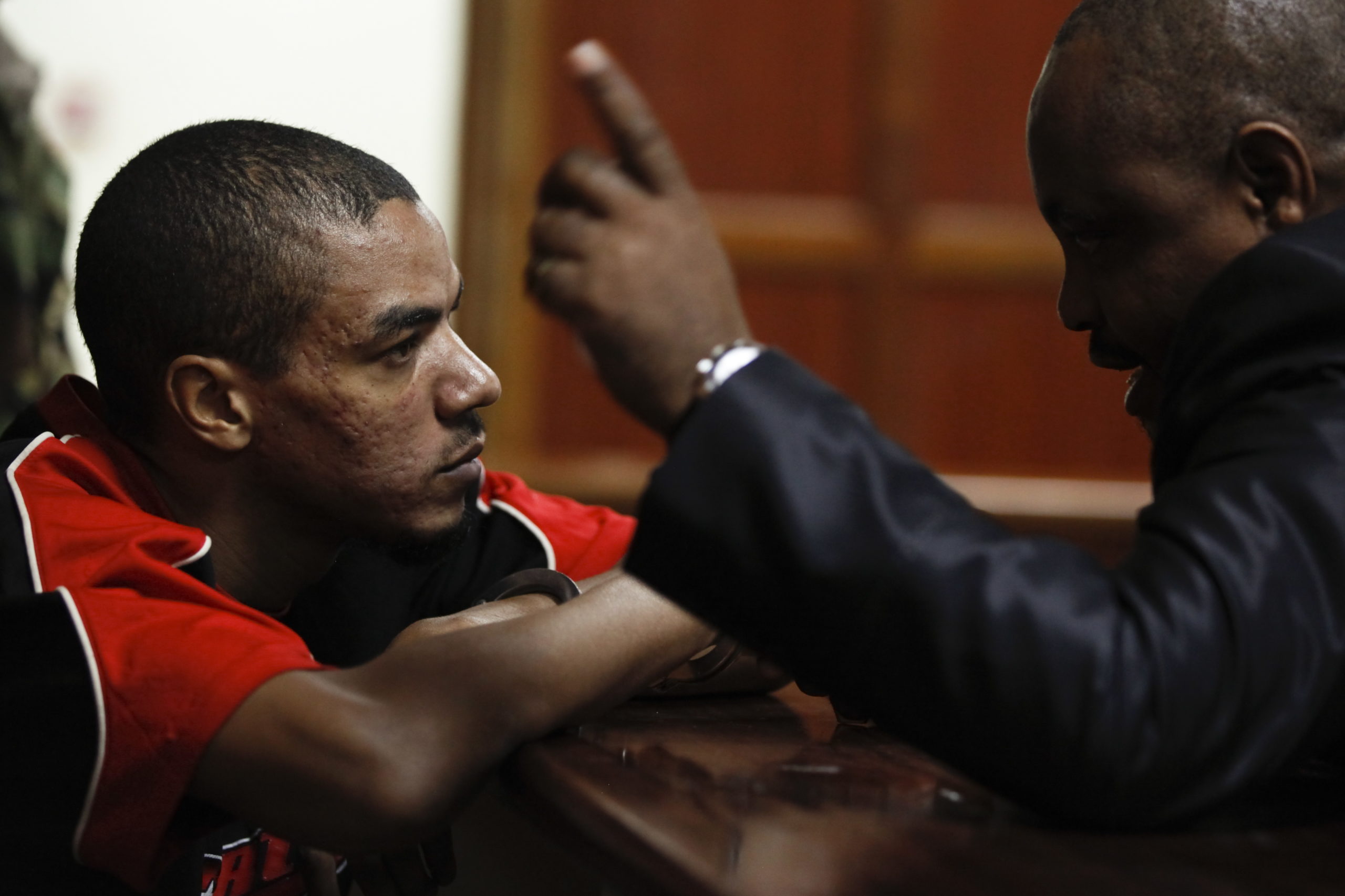
British citizen Jermaine Grant (L) talks with his lawyer (R) as he sits inside the dock at a courtroom in Nairobi, Kenya, 10 April 2012, following an MI6-ARCTIC-RRT capture operation. Grant is now serving a 13-year jail sentence. (Photo: EPA / Dai Kurokawa)
Two years later, in June 2013, RRT commandos would kill Kassim Omollo, an alleged al-Shabaab trainer, bomb expert and an accomplice of Grant, in another pre-dawn raid. Omollo had allegedly slipped back into Kenya from Somalia and was maintaining a low profile at his family home in Mombasa.
In the aftermath, a Kenyan police spokesperson claimed Omollo was killed after refusing to surrender, stating that hand grenades, a pistol, an AK-47 assault rifle, ammunition and chemicals for making home-made explosives had been recovered.
However, independent investigations report that Omollo, his wife, and their four young children were told: “We were sent to kill you.” After Omollo kissed his son, the officers pulled his children away and proceeded to shoot him in the chest, and then a further three times in the head, a witness told researchers.
Omollo’s killing was wrongly attributed by the press and human rights organisations to the ATPU, which handled the crime scene after the raid. An officer with direct knowledge of the operation confirmed that, owing to Omollo’s firearms training, an RRT team led the raid, having been guided to his location by the MI6-NIS intelligence liaison cell, ARCTIC.
‘Hands-on’
Often it is the CIA’s liaison—an officer in the agency’s paramilitary Special Activities Center (SAC) Ground Branch—who feeds the actionable intelligence to the RRT commandos, either directly or through the NIS.
One former liaison officer was known to the Kenyan operatives as “Matt”, said one RRT officer, who described him as a “down-to-earth guy who would sit with the guys and talk to them”. The officer added, “Matt made us form a family and we were really a family”.
Far from being exceptional, Matt’s approach reflected the CIA’s broader attitude towards its liaison partners, a former senior US State Department official confirmed. “When we support these kinds of units we’re really hands-on. We don’t just hand them the money once a month.”
The RRT commandos who worked with Matt explained that his CIA counterpart would prepare the team through the General Service Unit-Recce-RRT chain of command in advance of orders issued by Kenya’s Inspector General of police.
“We normally had that information ahead of time, from Matt or the NIS guys… We agreed on the number of people [to deploy] and then he [Matt] would drop the finances and tell me to wait until the time it’s official from the bosses. The Americans are the same people giving the information to NIS so we would work as one team,” the RRT officer explained.
Describing the CIA liaison’s hands-on approach to the RRT, another former Kenyan commando explained, “They will spearhead everything. They will do an operation plan, share that with you, [then] they will come take you down, sit you through it.” After the operation, he added, “they debrief you and then they’re gone.”
Five current and former senior US officials with knowledge of the CIA programme told Declassified their support was key to ensuring the RRT’s professionalism. It “gave a lot of incentive for guys to want to be in that unit and stay,” said the former senior CIA official familiar with counter-terrorism operations in the region.
RRT members, he added, receive “top-tier training from some of the best operators in the world – legends in special forces – and then you get a [financial] bonus for being on call and being part of that unit.”
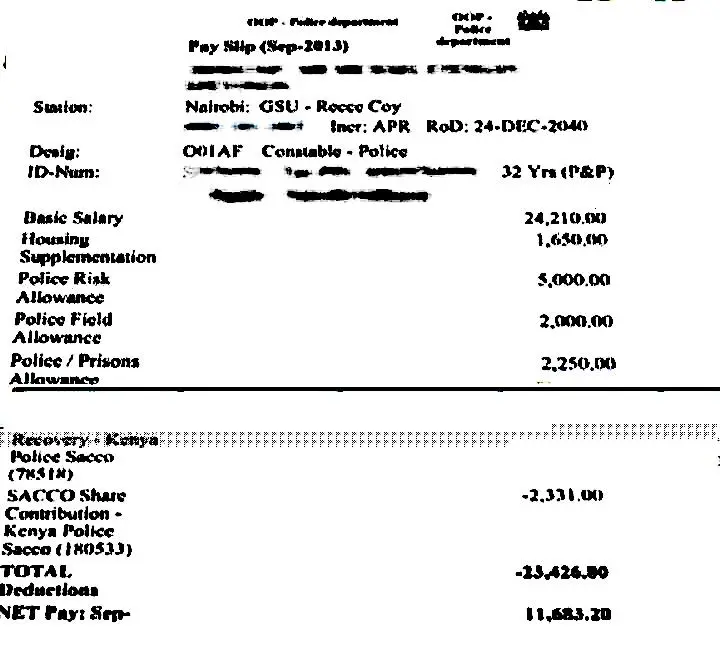
Payslip of a Recce Company commando dating to September 2013, showing the equivalent of around US$150 per month after taxes. (Photo: Boniface Mwangi)
During one raid, in Likoni, Mombasa in October 2012, RRT commandos surrounded a residential compound with two terror suspects inside. Officers demanded the suspects open the door, but one responded by hurling a hand grenade, killing an RRT commando and seriously injuring the officer commanding. It was the first time an RRT officer had been killed in a tactical operation.
What followed underlined the strength of relations between the US embassy and the commando team. The CIA liaison at the time, “Matt”, covered the cost of the injured officer’s six-week treatment and convalescence at the Aga Khan hospital, paying him multiple follow-up visits, officers confirmed.
On top of this, the injured officer received a one-off payment of 120,000 Kenyan shillings (then worth approximately US$1,400) from Matt, over ten times the officer’s monthly wage. “That person would know someone else is feeling his pain,” an RRT officer said.
Commenting on US support to the RRT, former US ambassador to Kenya, Michael Ranneberger, who left office in 2011, said, “That kind of support is critical to making them a professional force. If you’re really trying to set up a professional unit that will respect human rights and be effective in carrying out its operations, our support is critical.”
While neither the US government nor the US embassy in Nairobi has previously commented on its role in supporting the Kenyan commando team, former CIA director John Brennan did admit to knowledge of abuses by partners.
Responding to concerns raised by US Senator Ron Wyden over the CIA’s support to abusive foreign security forces in 2015, Brennan said: “We strive to identify and, where possible, avoid working with individuals whom we believe to be responsible for such abuses. In some cases, we have decided to continue those relationships, despite unacceptable behaviour, because of the critical intelligence those services provide, including information that allows us to disrupt terrorist plotting against the United States.”
However, members of the secretive Kenyan team say their American handlers have done little to hold it accountable. Moreover, targeted killings, rendition operations and other tactics barred by Kenyan law became routine for the unit, whose operational tempo increased dramatically after Kenya’s 2011 invasion of Somalia provoked a wave of domestic terror attacks.
Avoiding detection
For 16 years, RRT operatives have managed to avoid detection and public scrutiny. Multiple RRT officers, who operate in plainclothes when on tactical counter-terror assignments, admitted using unmarked cars hired from private companies and swapping between private or unregistered number plates, in order to avoid identification.
A single RRT vehicle typically carries at least three plates which are swapped at least once on operations, upon departure from a target’s location.
The vehicles used vary but former RRT officers confirmed that the US had supplied a stock of at least six white Toyota Landcruisers (76 model), specially ordered with blacked-out windows and a custom cabin to accommodate the commandos’ needs.
Kenyan officers conducting surveillance in urban areas sometimes also appear in less conspicuous Toyota Premio sedans, while in high value operations, their CIA handlers would occasionally join them but remain at a safe distance in black, fully tinted Landcruiser Prado SUVs (J120 model).
Declassified has also learned that since 2004, RRT operatives have disguised themselves as aid workers when on operation in refugee camps such as Dadaab in eastern Kenya or Kakuma in the northwest.
In Dadaab, concerned by al-Shabaab’s infiltration of the camps, weapons smuggling and attack plans on Kenyan soil, the officers used United Nations World Food Programme (WFP) vehicles and wore WFP t-shirts while posing as aid distributors, as they sought to identify those suspected of bringing in weapons and collaborating with the militant group.
Once the suspects had been identified, and reports filed on the targets, a second team would then be sent in to “mop up” and neutralise the targets, a former RRT officer familiar with the operations said. Declassified understands that the RRT continues to send undercover officers to the camps on rotation.
A UN WFP spokesperson said the agency had no knowledge of the covert operations within the refugee camps. The UNHCR, which administers the camps, did not answer questions as to whether it had any knowledge of or involvement in facilitating the covert operations, instead noting that the Kenyan government retained responsibility for their security. The Kenya Police Service, under which the Recce Company RRT falls, did not answer requests for comment.
In another raid, on 18 May 2013, RRT operatives surrounded an apartment building outside Nairobi, according to an officer with knowledge of the operation. The target and his wife were killed after they violently resisted capture, a police spokesman would claim, and their baby was taken into custody.
The man killed was later named as Hassan Omondi Owiti, a terror suspect the police had allegedly been trailing for months. Also killed was his wife, Shekha Wanjiru.
Four witnesses told Human Rights Watch that the police had not encountered any armed resistance, contrary to the claims of Kenyan police.
But, despite the evidence compiled by the human rights organisation, there has been no known official Kenyan investigation into whether the RRT’s deadly raid was based on mistaken identity, whether excessive force was used in killing Owiti, or why his wife was also killed.
An RRT commando familiar with the incident explained that his squad operated in secret in order to avoid scrutiny and protect the team’s morale. “The work our special team does needs a lot of secrecy. If I expose myself and my team, we will become weak,” he said.
Maria Burnett, formerly of Human Rights Watch said she had “long-standing concerns that some Kenyan security forces make considerable efforts to conceal their identity, especially during counter-terrorism operations.” She added: “Such efforts are not only contrary to Kenyan law; they ultimately work to shield perpetrators of abuses from any shred of accountability.”
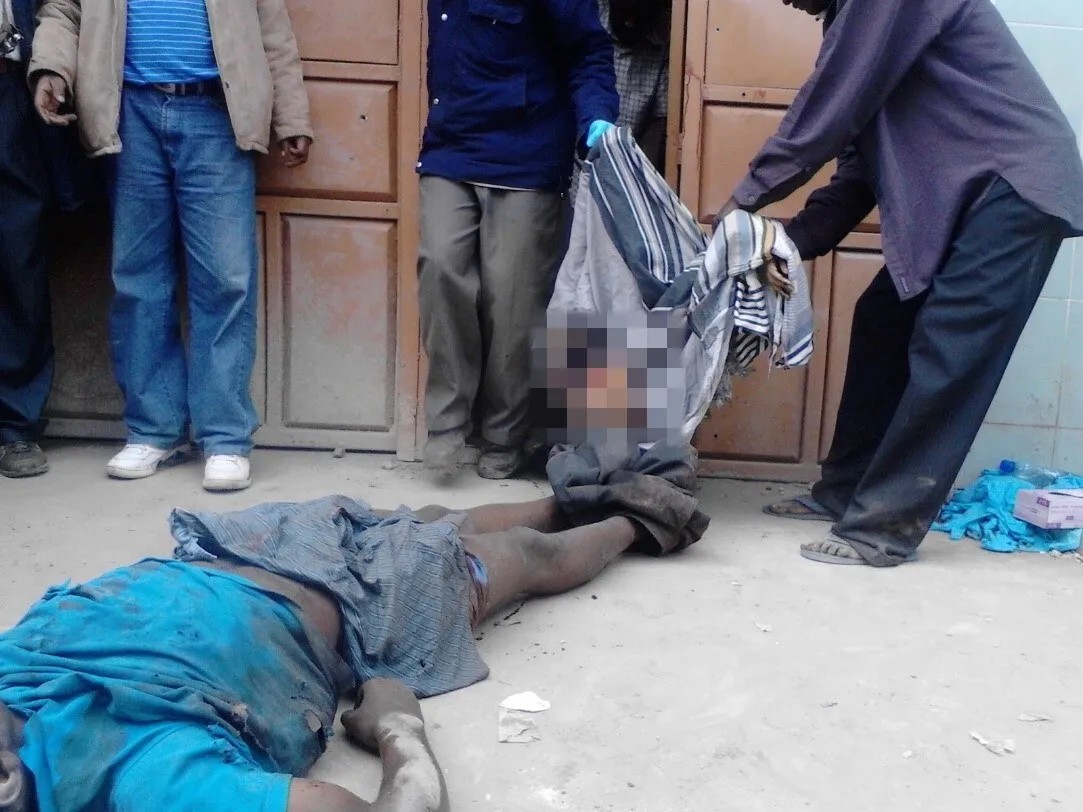
The body of Hassan Omondi Owiti in the blue t-shirt, and his dead wife, being carried out from the scene of an RRT raid. Pixelation by Declassified. (Photo: Kevin Midigo)
Successes
Current and former senior US officials with knowledge of the CIA programme in Kenya pointed to the RRT’s success in disrupting attacks.
The year 2018 witnessed one of the lowest death tolls from terror attacks in the past decade in Kenya. And while 2019 witnessed a 20% increase in casualties on the year before, the bulk of this difference was due to a single incident: the DusitD2 attack. On the whole, and with significant assistance from the CIA, Kenya has made substantial strides in disrupting terrorism.
However, while al-Shabaab’s attack on DusitD2 claimed fewer casualties than the earlier Westgate and Garissa attacks, experts described the raid as “representing a new and dangerous phase in the group’s evolution”, since it was the first major operation relying on Kenyan nationals of non-Somali descent.
Capitalising on the DusitD2 attack, in September 2019 al-Shabaab car bombers hit US and European military bases in Somalia. While the operations missed their targets, within two months a group of UN experts declared that al-Shabaab’s use of improvised explosive devices reached its “greatest extent in Somali history”.
For critics of the West and Kenya’s war on terror, recent events are ominous. “We are being hit all the time. Because we are being seen as pro-American, pro-West”, former Kenyan vice president Kalonzo Musyoka said. “It’s not a matter of if, but a matter of when we get attacked again. For as long as we have our troops inside Somalia.”
All US diplomatic and intelligence sources interviewed by Declassified expressed concern about Kenya’s abuses in the war on terror. Nonetheless, former US ambassador William Bellamy, who served in Nairobi from 2003-06, said that American-backed teams like the RRT should be “safeguarded and preserved”.
“That is the kind of CT [counter-terrorism] relationship where you feel your partner is accountable and responsive and where you have some correlation between your inputs and their outputs that you can point to”, he said.
But others say that in addition to flouting Kenyan law, the killings carried out by the RRT — and the culture of impunity it exemplifies — can breed extremism.
“Heavy-handed tactics seem to have become more pronounced in response to the terrorist threat following [the] Westgate [attack],” another former US ambassador Michael Ranneberger said. “All of this, of course, is linked to the culture of impunity, and heavy-handed tactics contribute towards radicalisation.”
Musyoka provided a starker assessment. “Extrajudicial killings push people underground. People say ‘OK, this is how our relatives have been killed. We shall take revenge!’…There is nothing that really radicalises [more] than taking somebody out in a manner that is not in accordance with the law.”
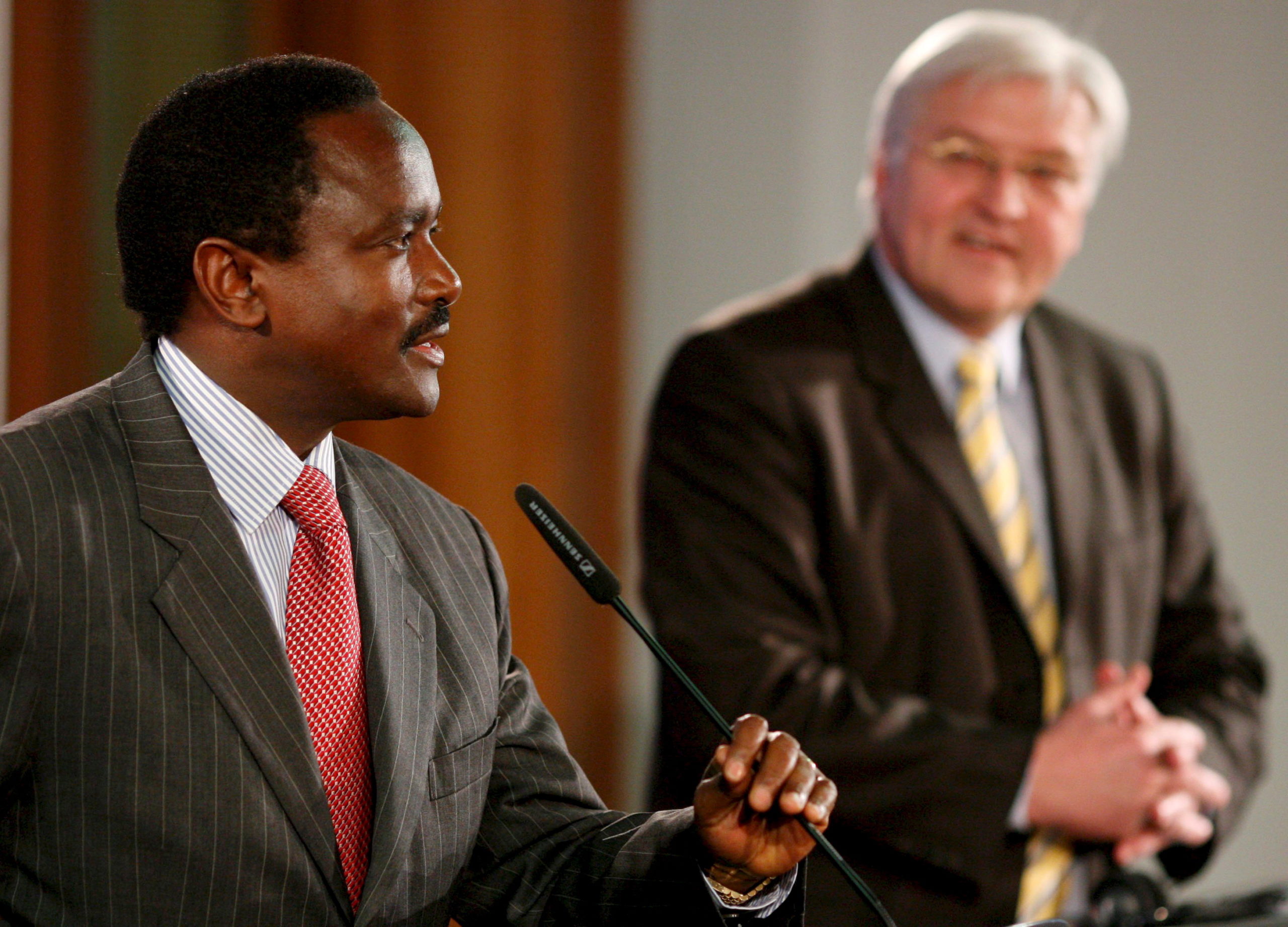
Kenya’s then Vice-President Kalonzo Musyoka (L) pictured during a press conference at the German Foreign Office in Berlin, 7 March 2008. (Photo: EPA / Soeren Stache)
Khelef Khalifa of Muhuri, which advocates for justice on behalf of victims of the war on terror, expressed similar concerns. “There is a lot of anti-American feeling because of everything they [the Kenyan police] do, people say ‘it is the Americans who fund the police to do this!’ Even when they [the Americans] know something is wrong, they don’t speak up.”
For Omar Faraj’s family still living on Kenya’s coast, every new killing or disappearance is a reminder of the night their son was murdered. In 2019, their region reportedly witnessed 43 extrajudicial killings by Kenyan police, an increase of almost 50% on the previous year.
As an elected member of the county assembly, Faraj’s brother Saad’s status brought him into contact with US ambassador to Kenya, Robert Godec, who departed in 2019.
He says he asked Godec why his government was supporting abusive units such as the one that killed his brother. “He appeared shocked when he heard the news so he gave me his contact,” Saad told Declassified. He says he reached out to Godec but never received a response.
Saad, his voice choking as he fought back tears, said: “If they are truly working to defeat extremism, they need to be sure before they take drastic decisions to eliminate people, because I’ve lost a very important person in my life. The least they can do is to come clean and say they apologise and admit the killing was a mistake.”
Former CIA deputy Henry Crumpton, dubbed a ‘master’ of covert operations, said respect for rights was key to winning the long war. “You’ve got to win allies in this kind of war and human rights abuses have no part in that. When you look at the counterterrorism programme in Kenya, it’s been successful…but I haven’t seen anything about winning the peace, and that is where the policy issue is essential.”
He added: “You can have great covert action, great law enforcement, great military cooperation, but if you don’t have a policy where you think about the long-term, then you’re just going to be engaged in the same operations, in the same districts, in the same border areas, in the same valleys, again and again.”
The US embassy in Nairobi, the Kenya Police Service and the Kenyan Ministry of the Interior did not respond to requests for comment. The CIA declined to comment while the UK Foreign and Commonwealth Office, which oversees MI6, said: “We don’t comment on intelligence matters.” DM
Namir Shabibi is a British investigative journalist who has written and produced documentaries for the BBC, VICE News and The Bureau of Investigative Journalism, among others. He previously worked as a delegate for the International Committee of the Red Cross (ICRC) in Darfur and Guantanamo Bay. Namir’s previous investigation uncovering MI6’s covert war in Yemen can be read here. He can be reached via namirreports[at]protonmail.com and on Twitter @nshabibi.
Declassified UK is an investigative journalism organisation that covers the UK’s role in the world. Follow Declassified on Twitter, Facebook and YouTube. Sign up to receive Declassified’s monthly newsletter here.


















 Become an Insider
Become an Insider